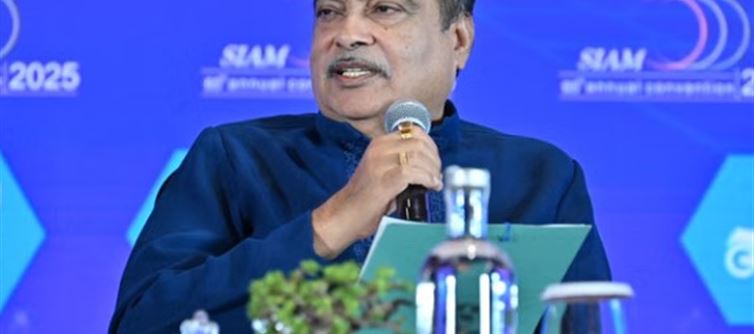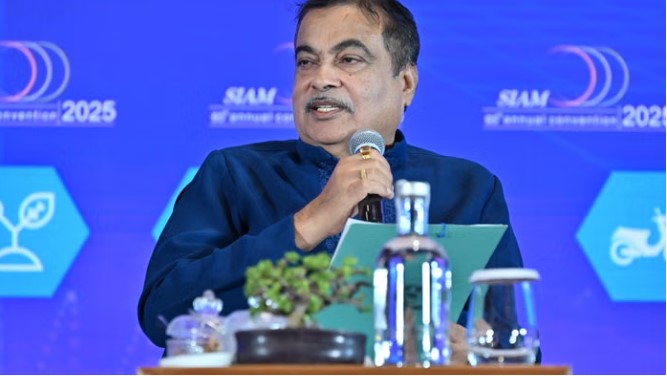
Nitin Gadkari’s Clear Message: Road Safety Must Be the Top Priority
At the 65th annual conference of the Society of indian Automobile Manufacturers (SIAM), Union Road Transport minister Nitin Gadkari and prime minister Narendra Modi stressed the vital role of the auto sector in building a developed India. The focus was not only on manufacturing but on transforming the sector through clean mobility, safety, and sustainability.
Here are the key highlights from Gadkari’s address:
🔴 Road Safety: Still a Distant Goal
India witnesses nearly 5 lakh road accidents every year, leading to a tragic loss of life.
Gadkari stressed that road safety must be treated as the top priority, or else all reforms will remain incomplete.

Measures taken include:
Mandatory six airbags in vehicles.
Promoting helmet use and awareness through celebrities like amitabh bachchan and Prasoon Joshi.
However, laws alone are not enough to change driver behavior.
A shortage of 22 lakh trained drivers further complicates the situation.
🌫️ Pollution: The Silent Crisis
Transport contributes 40% of India's total emissions.
Pollution has severe consequences—life expectancy in delhi can be cut short by 10 years.
India spends ₹22 lakh crore annually on fossil fuel imports.
The government is pushing for alternatives:
Ethanol, corn-based fuel, bio-CNG, and hydrogen.
E20 fuel blending has started but needs wider adoption.
🚛 High Logistics Cost: A Major Barrier
India’s logistics cost is around 10% of GDP, compared to China’s 7-8%.
Gadkari aims to bring this down to single digits by 2025.
Progress in highways and freight transport is notable.
However, road, rail, and port integration must be improved for better exports.
🧾 Scrappage Policy: The Missed Opportunity
As of august 2025, 3 lakh vehicles were scrapped, including 1.41 lakh government vehicles.
Yet, 97 lakh old vehicles remain unused.
Full implementation could:
Save 7 lakh tonnes of steel imports.
Generate ₹40,000 crore in GST.
Create 70 lakh jobs.
Offer an environmental gain equal to planting 26 crore trees.
However, lack of strong customer incentives is slowing adoption.
Gadkari’s message was clear: the vision for clean, safe, and efficient transportation must be matched by action, incentives, and infrastructure.




 click and follow Indiaherald WhatsApp channel
click and follow Indiaherald WhatsApp channel